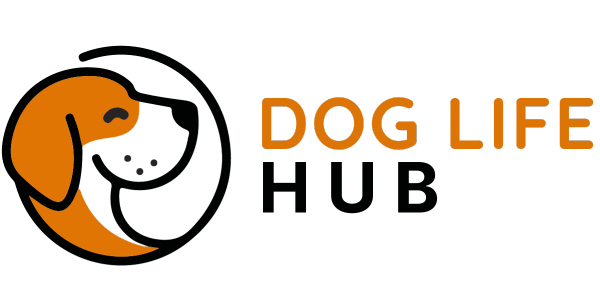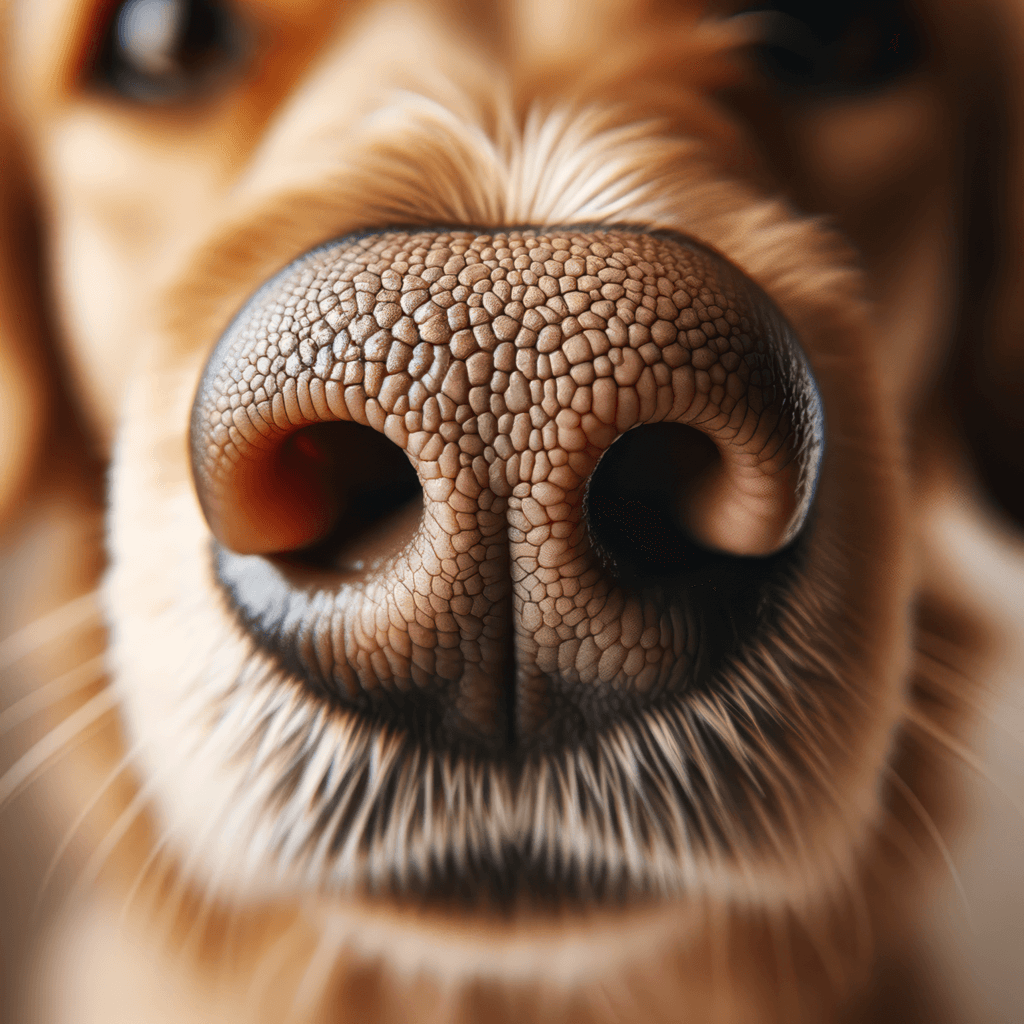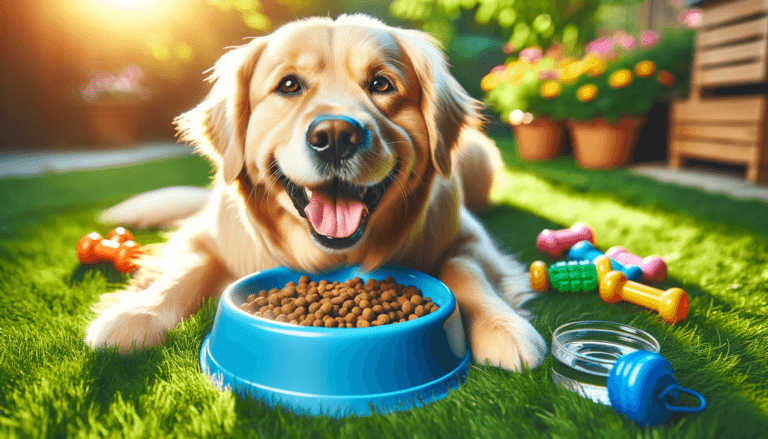Why Is My Dog’s Nose Dry? Myths, Facts, and Care Tips
Why is My Dog’s Nose Dry?
A dog’s nose can be dry due to various benign reasons like environmental factors (humidity and temperature), their sleeping habits (less licking of the nose during sleep), age-related changes, indoor heating or cooling, and temporary dehydration. However, if the dryness is persistent, accompanied by other symptoms like cracking, discharge, or changes in behaviour, it could indicate a health issue and a vet should be consulted.
Read on for a more in-depth answer.
Reasons For a Dog’s Dry Nose – An In-depth Look
The Functions of a dog’s nose
Dog owners often worry about a dry nose in their dogs because a common belief is that a healthy dog should have a wet nose. However, it’s important to note that a dry nose doesn’t necessarily indicate illness. Firstly, let’s look at the functions of a dog’s nose:
- Smelling: Dogs have an extraordinarily keen sense of smell. Their noses are designed to detect and differentiate a vast array of scents. The interior of a dog’s nose is lined with a specialised type of tissue that houses a large number of scent receptors – far more than humans have. When air enters the nostrils, scent particles are trapped by the moist, mucus-covered surfaces inside, allowing the dog to detect and interpret these smells.
- Identifying Information: Dogs use their sense of smell to gather information about their environment and other animals. They can detect pheromones, which are chemical signals used for communication among members of the same species. This is why dogs are often seen sniffing each other or objects in their environment.
- Regulation of Body Temperature: Dogs don’t sweat through their skin like humans do. Instead, they regulate their body temperature largely through panting. However, the moisture in a dog’s nose can also play a role in cooling. As the moisture evaporates, it can help to regulate their body temperature. Additionally, the nasal passages are an important part of the overall respiratory system that aids in temperature regulation.
- Moisture Level: The moisture level of a dog’s nose can vary for several reasons. It’s normal for a dog’s nose to fluctuate between wet and dry throughout the day. Factors such as hydration, environment (humidity and temperature), and even the dog’s recent activity can affect the moisture level of the nose.
- Sensory Input: The nose is also an organ of touch. Dogs have a highly sensitive area on the top of their nose, known as the planum nasale. This area helps them to feel and explore their environment, adding to their sensory input.
- Enhanced Breathing: The structure of a dog’s nose and nasal passages also helps in breathing. The shape and size of nostrils can vary among breeds, influencing how effectively a dog can breathe in different environmental conditions.
A dog’s nose has many functions, most notably its powerful sense of smell. A dog’s nose also helps regulate body temperature and allows the dog to explore the world through touch. A wet or dry nose alone does not necessarily signify a dog’s health status.
Myths and Facts About a Dog’s Dry Nose
The belief that a dog’s nose can be a reliable indicator of its overall health is surrounded by various myths and misconceptions. Here are some of the myths and the facts:
Myths:
- A Wet Nose Equals Good Health: One of the most common myths is that a dog with a wet nose is healthy, while a dry nose indicates sickness. In reality, a dog’s nose can vary between wet and dry for many benign reasons, such as environmental factors, hydration, and even the time of day.
- A Warm Nose Signifies Fever: Another misconception is that if a dog’s nose is warm to the touch, it must have a fever. A dog’s nose temperature can fluctuate throughout the day for reasons unrelated to fever or illness, such as sun exposure or room temperature.
- A Dry Nose Means Dehydration: While it’s true that dehydration can cause dryness in a dog’s nose, not all instances of a dry nose are due to dehydration. A dog’s nose can be dry for many harmless reasons.
Facts:
- Nose Texture and Discharge Can Be More Important: While the wetness or dryness of a nose isn’t a reliable health indicator, changes in the nose’s texture or the presence of unusual discharge can be more telling. A nose that is persistently cracked, has sores, or is producing abnormal discharge (like pus or blood) could indicate an underlying health issue. If this is the case in your dog, please consult a vet.
- Accompanying Symptoms are Key: A dry or warm nose in conjunction with other symptoms (like lethargy, vomiting, diarrhoea, or changes in appetite) could be more indicative of illness and warrant a vet visit.
- Breed-Specific Nose Health: Certain dog breeds are predisposed to nasal health issues due to the shape of their face and nose. For example, brachycephalic (flat faced) breeds (like Pugs and Bulldogs) may have more difficulties with breathing and are prone to certain nasal issues.
While a dog’s nose can provide some information about its health, it’s not a definitive indicator. Observing overall behaviour, physical condition, and other symptoms is much more reliable for assessing a dog’s health. If there are concerns about a dog’s health, regardless of the state of its nose, consulting a veterinarian is always the best course of action.

Reasons For a Dog’s Dry Nose
A dry nose in dogs can be caused by a variety of common and often harmless reasons. Understanding these can help alleviate unnecessary concern for pet owners. Here are some of the common reasons for a dry nose in dogs:
| Reason | Description |
|---|---|
| Environmental Factors | The humidity and temperature of the environment can affect the moisture level of a dog’s nose. In dry climates or during cold weather, dogs’ noses may become drier. Conversely, in more humid conditions, their noses may appear wetter. |
| Sleeping Habits | Dogs often have a dry nose after waking up from a nap or sleep. This is because they are not licking their nose as frequently during sleep, which is a natural behaviour that helps keep their nose moist. |
| Age | Older dogs may have drier noses as they tend to have less efficient self-moisturizing mechanisms compared to younger dogs. |
| Dehydration | While not the sole cause, dehydration can contribute to a dry nose. Ensuring that your dog has constant access to fresh water is important. |
| Sun Exposure | Just like human skin, a dog’s nose can become dry from prolonged exposure to the sun. This is particularly true for dogs with lighter-coloured noses. |
| Indoor Heating/Cooling | Air conditioning in summer and heating in winter can create a dry indoor environment, which might lead to a drier nose in dogs. |
| Allergies | Dogs, like humans, can suffer from allergies. Allergic reactions to pollen, dust, mold, or even certain pet products (like dyes or fragrances in bedding or toys) can cause a dry nose. |
| Breed Characteristics | Some dog breeds are predisposed to having drier noses. Brachycephalic breeds, for instance, might not lick their noses as effectively due to their facial structure. |
| Natural Variation | Just as humans have varying skin types, dogs can naturally have different nose moisture levels. Some dogs naturally have drier noses than others without any underlying health issue. |
It’s important for dog owners to remember that occasional dryness of the nose is normal and not necessarily a cause for concern. However, if a dry nose is accompanied by other symptoms like cracking, bleeding, lethargy, or changes in eating habits, it’s advisable to consult a veterinarian to rule out any underlying health issues.
Health Related Causes
While a dry nose in dogs can often be attributed to benign factors, there are instances where it can be a sign of health-related issues. Here are some of the health-related causes of a dry nose in dogs:
- Dehydration: One of the more serious causes of a dry nose can be dehydration. If a dog isn’t drinking enough water, or if it’s losing fluids due to diarrhoea, vomiting, or overheating, it may show signs of dehydration, including a dry nose.
- Fever or Illness: Similar to humans, dogs can get fevers when they’re ill. While a dry, warm nose alone isn’t a definitive sign of fever, it can sometimes accompany other symptoms of illness, such as lethargy, loss of appetite, or unusual behaviour.
- Nasal Hyperkeratosis: This is a condition where the skin on the nose becomes excessively hard and thickened, often leading to a very dry and sometimes crusty appearance. It’s more common in certain breeds and older dogs.
- Autoimmune Diseases: Certain autoimmune diseases, like lupus or pemphigus, can affect the nose, leading to changes in its appearance, including dryness, sores, and changes in pigmentation.
- Allergic Reactions: Dogs can have allergic reactions to a variety of substances, from food (alleviate with hypoallergenic dog food) to environmental allergens. These allergies can sometimes manifest through skin changes, including a dry nose.
- Sunburn: Dogs, especially those with light-coloured or thinly haired noses, can suffer from sunburn on their nose, leading to dryness and peeling.
- Skin Infections: Bacterial or fungal infections can affect the nose, resulting in dryness, cracking, and sometimes sores.
- Environmental Irritants: Exposure to certain chemicals or irritants, like cleaning products, smoke, or dust, can cause dryness and irritation of the nose.
- Nasal Cancer: Chronic dryness, nasal discharge, and facial swelling can be symptoms of nasal cancer, a serious condition requiring veterinary attention.
It’s important to consider the context and accompanying symptoms when assessing a dog’s health based on the condition of its nose. If a dog’s dry nose is persistent and accompanied by other concerning signs, or if there are changes in behaviour or physical condition, it’s advisable to consult a veterinarian for a proper diagnosis and treatment. Regular check-ups can also help in the early detection and treatment of potential health issues.
When To Consult a Vet
Consulting a veterinarian about a dog’s dry nose is advisable in certain circumstances, particularly when the dryness is accompanied by other symptoms or signs of concern. Here are specific situations where a vet visit is recommended:
- Persistent Dryness: If the dryness of the nose is continuous and does not fluctuate with changes in the environment or the dog’s activities.
- Cracking, Bleeding, or Sores: If the nose is not just dry but also showing signs of cracking, bleeding, or sores.
- Change in Nasal Texture or Colour: Any noticeable changes in the texture or colour of the nose, such as excessive roughness, scaling, or loss of pigmentation.
- Unusual Nasal Discharge: Discharge from the nose, especially if it’s bloody, thick, coloured, or accompanied by a foul odour.
- Other Symptoms: If the dry nose is accompanied by other symptoms like lethargy, loss of appetite, vomiting, coughing, sneezing, difficulty breathing, or behavioural changes.
- Signs of Discomfort: If the dog seems to be in discomfort, frequently pawing at or rubbing its nose.
- Swelling or Deformity: Any swelling, lump, or deformity in or around the nose area.
- No Improvement with Basic Care: If the dryness doesn’t improve with basic care, such as ensuring proper hydration and using a humidifier in dry indoor environments.
- High-Risk Breeds or Ages: In breeds predisposed to nasal issues or in older dogs where the risk of health problems is generally higher.
It’s important to note that while a dry nose can be a sign of an underlying issue, it’s not always a cause for alarm. However, when in doubt, especially if the dry nose is accompanied by other concerning signs, it’s always best to err on the side of caution and consult a veterinarian. A professional assessment can help determine if there’s an underlying health issue that needs attention.

Home Care and Preventative Measures
Home care methods and preventive measures can be effective in managing and preventing a dry nose in dogs, especially when the condition is not a symptom of an underlying health issue. Here are some home care tips and preventive strategies:
Home Care Methods
- Hydration: Ensure your dog has constant access to fresh water to prevent dehydration.
- Balanced Diet: A nutritious diet contributes to overall health, including skin and nose health.
- Humidifiers: Using a humidifier in dry indoor environments can help keep your dog’s nose moist.
- Nose Balms: There are balms and ointments specifically designed for dogs’ noses that can help keep them moist. Always choose products that are safe for pets, as dogs tend to lick their noses.
- Avoid Irritants: Reduce exposure to harsh chemicals, smoke, and strong fragrances that might irritate your dog’s nose.
- Sun Protection: For dogs with lighter-coloured noses, use pet-safe sunscreens to prevent sunburn, especially if they spend a lot of time outdoors.
- Regular Check-Ups: Regular veterinary check-ups can help identify and address any potential health issues early.
Preventive Measures
- Monitor Environment: Be aware of the humidity and temperature in your dog’s environment and adjust accordingly.
- Gentle Cleaning: If there’s dirt or debris on your dog’s nose, gently clean it with a soft, damp cloth.
- Avoid Overheating: Ensure your dog doesn’t overheat, especially during hot weather, as this can contribute to dehydration.
- Allergy Management: If your dog has allergies, managing them effectively can help prevent nasal dryness.
- Regular Health Assessments: Regular health assessments, including dental checks, can help prevent issues that might contribute to nasal dryness.
Understanding Limitations
While these home care methods and preventive measures can be helpful, it’s important to recognise their limitations. If a dry nose is persistent, accompanied by other symptoms, or causing discomfort to your dog, it’s best to seek veterinary advice. Some conditions may require medical treatment that goes beyond home care. Always consult with a veterinarian if you’re unsure or if the condition of your dog’s nose doesn’t improve with basic home care.
Key Takeaways
Why Dog Owners Worry About a Dry Nose
- A common belief is that a healthy dog should have a wet nose. Hence, a dry nose often causes concern.
- Changes from the usual state, coupled with internet and anecdotal information, lead to worries about health issues.
Normal State and Function of a Dog’s Nose:
- A dog’s nose can be naturally wet or dry, influenced by factors like environment, hydration, and sleep.
- Key functions include smelling, identifying information, and helping in body temperature regulation.
Myths vs. Facts About a Dog’s Nose as a Health Indicator:
- Myth: A wet nose equals good health, and a dry nose always indicates sickness or dehydration.
- Fact: Changes in nose texture and accompanying symptoms (like lethargy or appetite changes) are more significant indicators of health issues.
Common Reasons for a Dry Nose:
- Environmental factors, sleep habits, age, indoor heating/cooling, and allergies.
- A dry nose can vary due to normal and benign reasons.
Health-Related Causes:
- Apart from benign factors, a persistent dry nose with symptoms like cracking, bleeding, unusual discharge, or accompanied by other health symptoms could indicate issues like dehydration, nasal hyperkeratosis, autoimmune diseases, allergies, or even nasal cancer.
When to Consult a Vet:
- If the dry nose is persistent, accompanied by other symptoms, shows signs of discomfort or changes in appearance, or doesn’t improve with basic care.
Home Care and Prevention:
- Ensure proper hydration and a balanced diet.
- Use humidifiers in dry environments and apply pet-safe balms if necessary.
- Protect from sunburn and avoid exposure to irritants.
- Regular veterinary check-ups are crucial for early detection of any issues.
Frequently Asked Questions
Please share this article if you think it will help a dog or a dog owner, and please leave a comment below if you have any advice, questions or tips – we’d be happy to hear from you.




